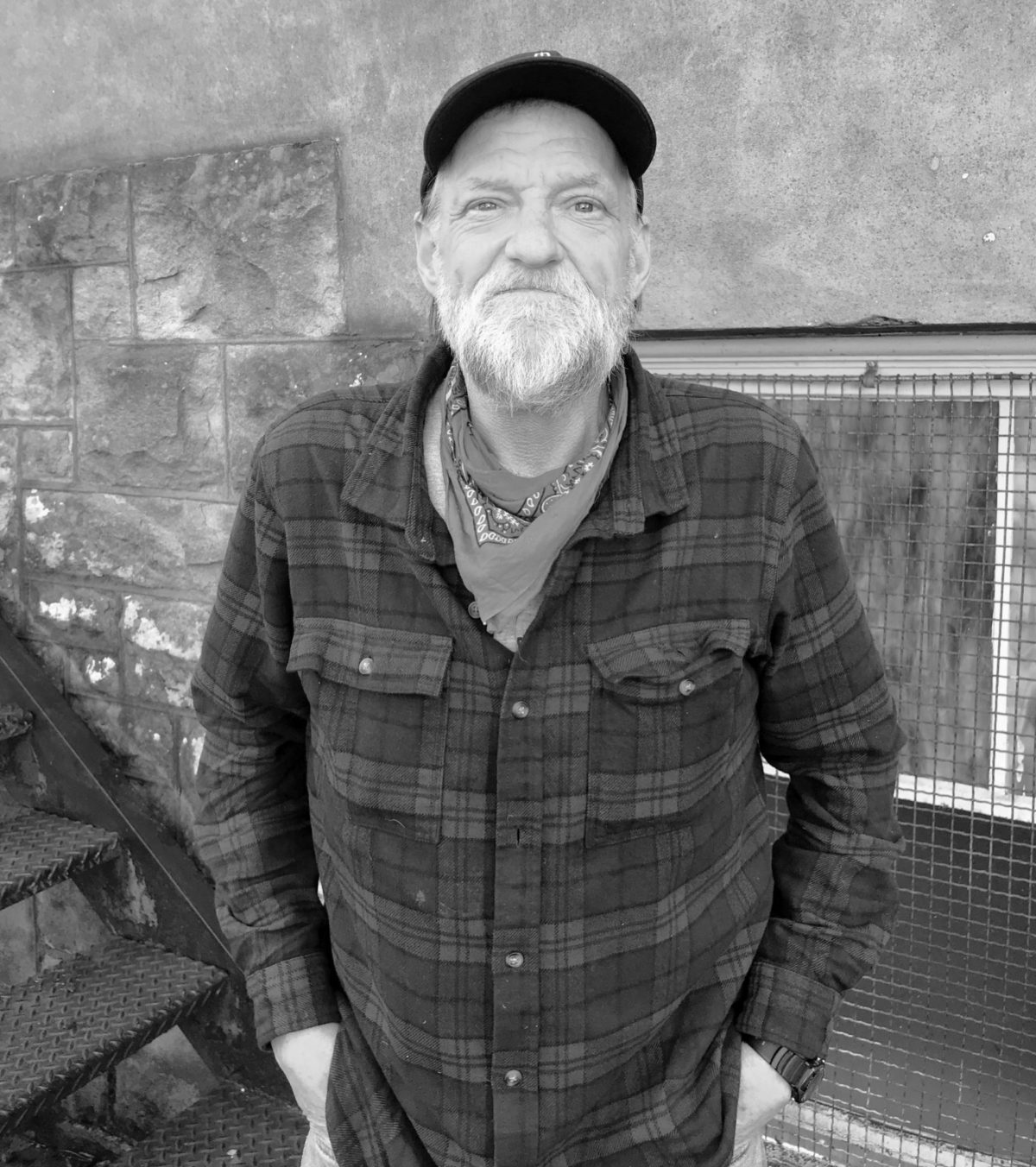Q&A with Mark Usher
When did you settle in Sunnyside?
Last April.
Why did you choose Sunnyside over another part of the city?
I seen the gathered people—the homeless area—and so I blended in. Tried to! I first went to Laurelhurst and then we got swept. We were forced to move down here.
What led you to become homeless? (If you don’t mind talking about it.)
I had transferred from the Newberg Fred Meyer store to the Clackamas store because my buddy Adrian was running the meat market there. But before I started, he went to selling insurance, because he could make more money. I had a heck of a time getting on back there in any departments.
So because you didn’t have a job you weren’t able to pay your rent.
Right, exactly.
You went up to Sandy yesterday to visit your daughter. How did that go?
I knocked a couple trees down for the doctor I work for, at his house on Mount Hood. (He also has a place on Burnside.) He was afraid they were gonna drop on his house. While I was up on the mountain, I seen my daughter. Then, I dropped by to ask him, I was like, “When you want me to do them?” and he said, “Right now’s a good time!” I said, “Oh no!” I said to him, “I’m not gonna buck ‘em and limb ‘em, I’m just gonna drop them.” He can go out there anytime with a chainsaw and do the rest. I had to catch my bus back to Portland.
I don’t know all this lingo. Can you explain?
I used to work for Brandon Logging in Sandy—I ran the landing. That’s when log trucks park and they load the logs on the truck. You “limb it,” which means you cut the limbs off. Then you “buck it”—cut it into sections.
You do other work for this doctor, right? You’ve mentioned he also has a place on Burnside.
He has properties all over the place and I go in and put new fixtures in: sinks, toilets and stuff like that. He rents them out. Sometimes we’ll remodel the whole thing—we’ll do everything from the hardwood floors to painting. He was my neighbor up on the mountain for about ten years. He helps me out a lot. I can go charge my phone at his place. I house sit for him when he takes off for Texas or Indiana to visit his kids.
What do you like most about Sunnyside?
It’s quiet down here. Probably having the church here helps keep it quiet. And it seems like the people are nicer here! (Laughs.)
What’s one thing you would change about Sunnyside, if you could?
They got an outhouse right there. That’s nice of them. But they don’t put enough of them. For 15 people, that’s good. But for 30 people—one outhouse gets trashed. That would be an improvement. And keep up the good work on the Neighborhood Association!
Can you explain to housed neighbors what it’s like to be houseless?
The uncertainty on where do you go? Anywhere you go, they don’t want you there, which I can see. If you have a nice home at Laurelhurst, you don’t want to be up in the morning looking at your window to see that. But we don’t camp across from their houses now. But still, it’s a burden. People come down there and go, “Look at that. It’s messy!” I don’t know what could make people change their minds on having people camping across from them.
How long have you been on the list waiting for affordable housing?
Over a year. I don’t mind them giving whatever comes available to women and children first. We just need a place to go where we know our stuff will be there when we’re back from work, you know?

